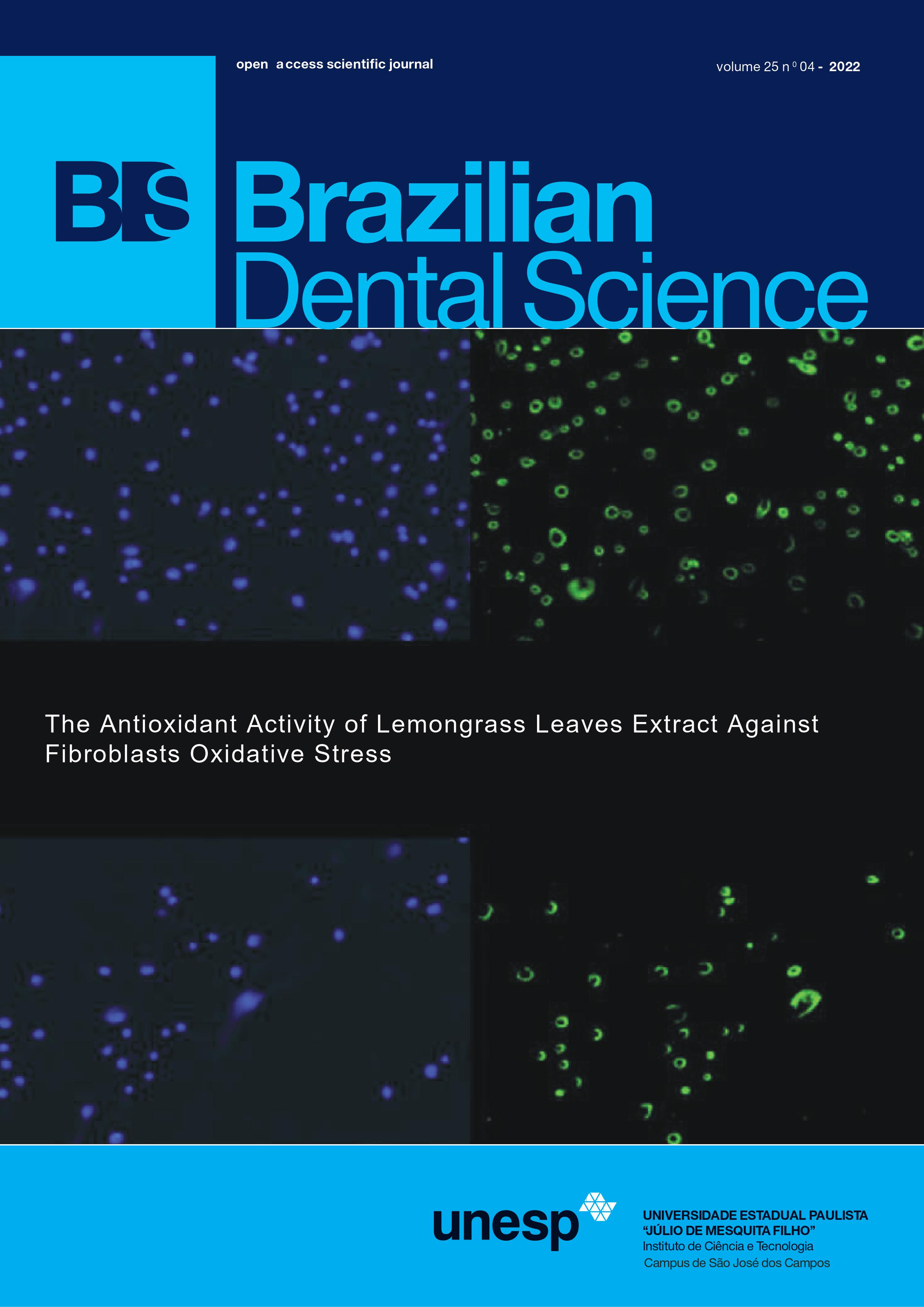The impact of oral hygiene instruction on plaque control in orthodontic patients: a cross-sectional study
DOI:
https://doi.org/10.4322/bds.2022.e3557Resumo
Objective: Deficient dental plaque control is common in adolescents, mainly among those wearing orthodontic
apparatus. This study aimed to compare plaque control and oral hygiene habits in adolescents with and without
fixed orthodontic appliances. Additionally, it was investigated whether personalized oral hygiene instruction
(OHI) could be a predictor for reducing dental plaque accumulation in orthodontic patients. Material and
Methods: Sixty-nine patients, aged 12 to 20 years, were evaluated in a public organization which provides dental
care. A questionnaire of oral hygiene habits was applied, and the number of natural teeth and number of teeth
with visible biofilm were obtained during clinical examination. A comparative analysis of sociodemographic
and clinical data was performed, splitting this population into two groups: those who used fixed orthodontic
appliances (n=40) and those who did not (n=29). Results: There were no differences in oral hygiene habits
among groups. The Poisson regression showed that adolescents with fixed appliances were 54% more likely to
have dental plaque buildup compared to those who did not. Among individuals wearing orthodontic appliance,
those who had not received personalized OHI before or during orthodontic treatment were 78% more likely
to have a greater number of teeth with bacterial plaque compared to instructed ones. Conclusion: Especially
among the adolescents wearing fixed orthodontic appliances, those who have not received personalized OHI were
almost twice as likely to have a greater number of teeth with dental biofilm accumulation. Dentists and dental
hygienists play a prominent role in motivating and improving the quality of individual oral hygiene.
KEYWORDS
Oral hygiene; Dental plaque; Orthodontic appliances; Adolescent; Prevention and control.
Downloads
Downloads
Publicado
Como Citar
Edição
Seção
Licença
TRANSFERÊNCIA DE DIREITOS AUTORAIS E DECLARAÇÃO DE RESPONSABILIDADE
Toda a propriedade de direitos autorais do artigo "____________________________________________________________________" é transferido do autor(es) para a CIÊNCIA ODONTOLÓGICA BRASILEIRA, no caso do trabalho ser publicado. O artigo não foi publicado em outro lugar e não foi submetido simultaneamente para publicação em outra revista.
Vimos por meio deste, atestar que trabalho é original e não apresenta dados manipulados, fraude ou plágio. Fizemos contribuição científica significativa para o estudo e estamos cientes dos dados apresentados e de acordo com a versão final do artigo. Assumimos total responsabilidade pelos aspectos éticos do estudo.
Este texto deve ser impresso e assinado por todos os autores. A versão digitalizada deverá ser apresentada como arquivo suplementar durante o processo de submissão.




























